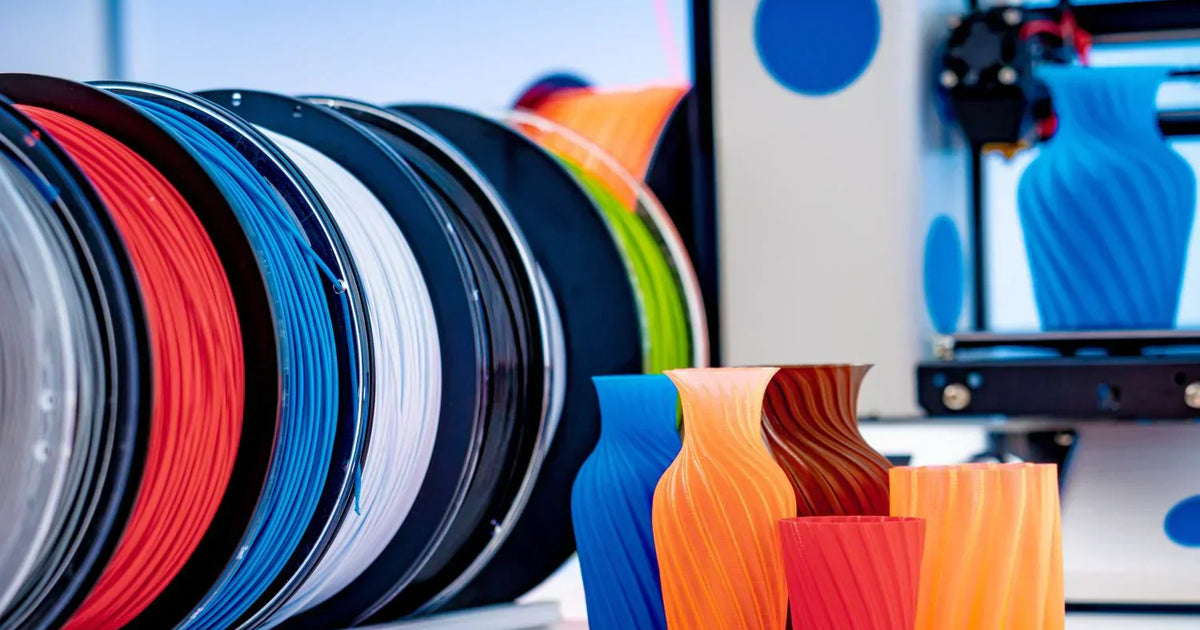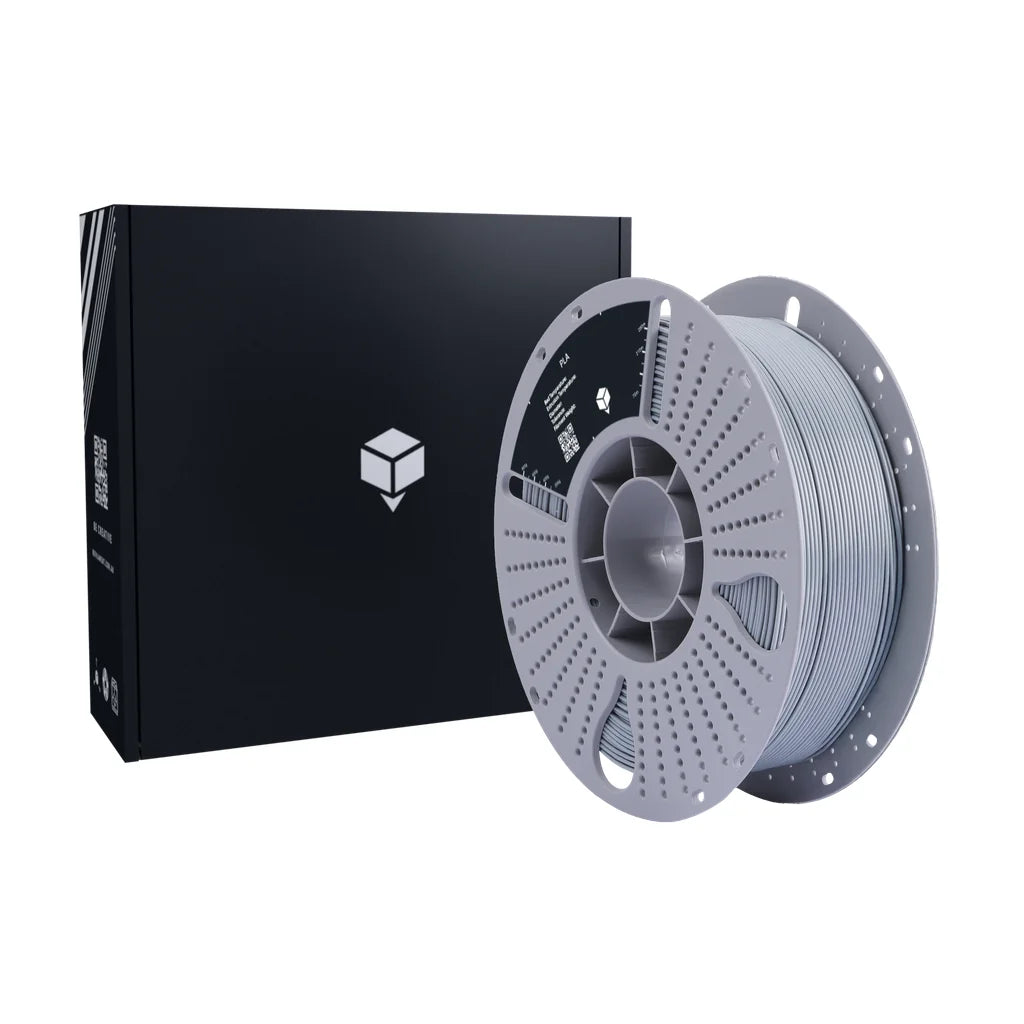
PLA vs PETG vs ABS: Which 3D Printing Filament Should You Use?
Introduction: Navigating the World of 3D Printing Filaments
The exhilarating world of 3D printing offers unparalleled opportunities for creation, from intricate miniatures to robust functional prototypes. However, a common challenge faced by enthusiasts and professionals alike is selecting the right material for the job. With a myriad of options available, understanding the unique characteristics of each filament is paramount to achieving successful and high-quality prints. This comprehensive guide delves into the three most popular and versatile FDM 3D printing filaments: PLA Filament, ABS Filament, and PETG Filament.
Each of these materials boasts distinct properties that make them suitable for different applications. Whether you're a hobbyist taking your first steps in desktop 3D printing or a seasoned professional seeking optimal material performance, knowing when to choose PLA, ABS, or PETG can significantly impact your project's outcome. We’ll break down their strengths, weaknesses, ideal use cases, and crucial printing considerations, empowering you to make informed decisions for your next 3D printing endeavour.

Understanding PLA Filament: The Beginner's Best Friend and Versatile Choice
PLA Filament (Polylactic Acid) is undoubtedly the most popular starting point for anyone entering the world of 3D printing. Derived from renewable resources like corn starch or sugarcane, PLA is celebrated for its ease of use, biodegradability, and excellent aesthetic qualities. It’s an ideal choice for a vast range of projects, particularly those where environmental impact and ease of post-processing are key considerations.
Key Characteristics of PLA Filament:
- Ease of Printing: PLA prints at relatively low temperatures (180-220°C nozzle, 0-60°C bed), minimising warping and making it forgiving for new users. It typically doesn't require an enclosed print chamber.
- Low Odour: Unlike some other filaments, PLA produces a very mild, often sweet odour during printing, making it suitable for home or office environments.
- Good Aesthetics: Prints generally have a smooth, glossy finish and offer excellent detail resolution, making them perfect for display pieces and models.
- Biodegradability: As a bioplastic, PLA is compostable under industrial conditions, offering a more environmentally conscious option.
- Strength & Durability: While strong, PLA is quite brittle. It has good tensile strength but poor impact resistance, meaning it can snap under stress rather than bend.
- Temperature Resistance: PLA has a low glass transition temperature (Tg) of around 60-65°C, meaning prints can deform or soften in hot environments (e.g., a car on a hot day).
Ideal Applications for PLA Filament:
- Prototypes & Models: Perfect for initial design iterations, architectural models, and proof-of-concept prints due to its ease of printing and detail.
- Artistic Prints & Miniatures: Its ability to capture fine details and smooth finish make it excellent for figurines, decorative items, and cosplay props.
- Educational Projects: Safe and easy to use in schools and educational settings.
- Low-Stress Parts: Ideal for parts that won't experience high temperatures, significant mechanical stress, or outdoor exposure.
For a wide range of colours and special finishes, explore our extensive PLA filaments collection. You'll find everything from glow-in-the-dark options, ensuring you have the perfect material for your creative projects.
Exploring ABS Filament: Strength and Durability for Functional Prints
ABS Filament (Acrylonitrile Butadiene Styrene) is a robust thermoplastic known for its strength, flexibility, and heat resistance. Widely used in everyday products like LEGO bricks and car bumpers, ABS offers properties that make it a go-to choice for functional parts requiring durability and the ability to withstand higher temperatures. However, it presents a slightly steeper learning curve compared to PLA.
Key Characteristics of ABS Filament:
- High Strength & Durability: ABS boasts excellent tensile strength and impact resistance, making it much tougher and less brittle than PLA. It can handle more stress and strain before breaking.
- Heat Resistance: With a higher glass transition temperature (around 105°C), ABS prints maintain their form and strength in hotter environments, making them suitable for parts that might be exposed to heat.
- Flexibility: While not a flexible filament, ABS has a certain degree of flexibility compared to the rigid PLA, allowing it to bend slightly before breaking.
- Post-Processing: ABS can be easily sanded, painted, and smoothed with acetone vapour, allowing for high-quality finished surfaces.
- Printing Challenges: ABS is notorious for warping and delamination due to thermal contraction. It requires a heated print bed (typically 80-110°C) and often an enclosed print chamber to maintain a stable printing environment and prevent drafts.
- Odour & Fumes: ABS produces a distinctive, strong plastic odour and potentially harmful ultrafine particles (UFPs) during printing. Proper ventilation is crucial when printing with ABS.
Ideal Applications for ABS Filament:
- Functional Prototypes: Ideal for parts that need to be tested for durability and performance in real-world conditions.
- Mechanical Components: Excellent for gears, enclosures, and other parts requiring strength, impact resistance, and a degree of flexibility.
- Automotive Parts: Suitable for non-critical parts within vehicles due to its heat resistance.
- Tooling & Jigs: Perfect for custom tools or fixtures that need to withstand repeated use.
When your project demands exceptional toughness and heat resistance, explore our range of ABS filaments. We recommend printing quality ABS in a well-ventilated area with an enclosed printer for best results.

Discovering PETG Filament: Bridging the Gap Between PLA and ABS
PETG Filament (Polyethylene Terephthalate Glycol-modified) is often considered the best of both worlds, combining many of the desirable properties of PLA with the strength and heat resistance of ABS, without many of their respective drawbacks. It's becoming increasingly popular for its versatility and ease of use compared to ABS, while offering superior mechanical properties over PLA.
Key Characteristics of PETG Filament:
- Strength & Durability: PETG is very strong, durable, and less brittle than PLA, offering good impact resistance. It's also more flexible than PLA but generally stiffer than ABS.
- Heat Resistance: With a glass transition temperature of around 80-85°C, PETG offers better heat resistance than PLA, though slightly less than ABS. This makes it suitable for parts exposed to moderate heat.
- Water Resistance: PETG is highly resistant to water, making it excellent for outdoor or moisture-prone applications.
- Layer Adhesion: PETG is known for its excellent layer adhesion, which contributes to strong, cohesive prints. However, this can sometimes lead to stringing issues if retraction settings aren't optimised.
- Ease of Printing: While not as easy as PLA, PETG is significantly easier to print than ABS. It requires a heated bed (60-80°C) but typically doesn't need an enclosed chamber, and warping is far less common. Nozzle temperatures usually range from 230-250°C.
- Food Safe (Certain Variants): Pure PETG is considered food-safe, making it suitable for certain food-contact applications, though always check the specific product's certifications.
- Low Odour: Like PLA, PETG produces minimal odour during printing, making it more pleasant for indoor use than ABS.
Ideal Applications for PETG Filament:
- Functional Parts: Excellent for parts that require good mechanical strength, durability, and a degree of flexibility, such as machine parts, clamps, and protective covers.
- Outdoor Applications: Its UV and water resistance make it suitable for outdoor use where PLA would degrade and ABS might not offer enough weatherability.
- Containers & Bottles: Due to its properties, PETG is widely used in food and beverage packaging.
- Wearable Parts: Its strength and flexibility can make it a good choice for items that need to withstand some bending or impact.
If you're looking for a filament that balances ease of use with robust performance, explore our premium selection of PETG filaments.
Key Considerations When Choosing Your 3D Printing Filament
Selecting the optimal 3D printing filament isn't a one-size-fits-all decision. Your choice should be dictated by the specific requirements of your project. Here’s a comparative overview to help you decide:
Filament Comparison Matrix:
-
Ease of Printing:
- PLA: Easiest. Low temp, minimal warping, no enclosure needed.
- PETG: Moderate. Higher temp, less warping than ABS, enclosure not strictly necessary.
- ABS: Challenging. High temp, prone to warping, requires heated bed and often an enclosure.
-
Strength & Durability:
- PLA: Good tensile strength, but brittle. Low impact resistance.
- PETG: Very good tensile and impact strength, good flexibility.
- ABS: Excellent tensile and impact strength, good flexibility.
-
Heat Resistance:
- PLA: Poor (softens ~60-65°C).
- PETG: Good (softens ~80-85°C).
- ABS: Excellent (softens ~105°C).
-
Flexibility:
- PLA: Very rigid.
- PETG: Moderate flexibility.
- ABS: Good flexibility, more elastic.
-
Outdoor/UV Resistance:
- PLA: Poor. Degrades in UV and moisture.
- PETG: Good. Resistant to UV and water.
- ABS: Fair. Can degrade over time with prolonged UV exposure.
-
Odour & Fumes:
- PLA: Minimal, slightly sweet.
- PETG: Minimal.
- ABS: Strong plastic odour, emits VOCs and UFPs. Requires good ventilation.
-
Post-Processing:
- PLA: Easy to sand, paint, glue.
- PETG: Can be difficult to sand; strong layer adhesion can be tricky for supports.
- ABS: Sands well, can be smoothed with acetone vapour.
-
Cost:
- Generally, PLA is the most affordable, followed by PETG, then ABS, though prices can vary by brand and colour.
Real-World Applications: When to Choose Which Filament
Let's consider a few common scenarios where the choice of filament can make all the difference:
- For a decorative vase or a child's toy: You'd likely opt for PLA Filament. It's easy to print, offers a smooth finish, and is safe for general use. Its low heat resistance isn't an issue for such items.
- For a custom drone frame or a functional car part: ABS Filament would be a strong contender. Its superior impact resistance and heat tolerance are crucial for parts that will experience stress and varying temperatures. Remember to print it in a well-ventilated space with an enclosure.
- For an outdoor garden gnome or a protective case for electronics: PETG Filament shines here. Its UV and water resistance, combined with good strength, make it durable for outdoor exposure without the warping issues of ABS. Its excellent layer adhesion ensures a robust print.
- For a prototype bracket for a machinery component: Depending on the required stress and thermal conditions, either PETG Filament or ABS Filament could be suitable. If high temperatures are involved, ABS might be better, but for general strength and easier printing, PETG is often preferred.
- For a custom cookie cutter or food-safe mould: While some PLA can be considered food-safe, pure PETG filament is often the preferred choice due to its chemical inertness and water resistance, provided it's a certified food-grade variant and your nozzle isn't brass (which can contain lead).
Always consider the intended environment and functional requirements of your 3D printed object before settling on your filament. Thinking through these factors upfront will save you time, material, and frustration.
Optimising Your Prints: Tips for Each Filament
Beyond material selection, successful 3D printing also hinges on optimising your printer settings for the chosen filament. Here are some quick tips:
- For PLA: Keep cooling fan at 100% for most layers to prevent heat creep and improve overhangs. Use a small brim for better bed adhesion if needed.
- For ABS: Print with an enclosure to maintain ambient temperature and reduce warping. Use a high bed temperature (80-110°C) and a thin layer of ABS slurry (ABS dissolved in acetone) on the build plate for superior adhesion. Reduce cooling fan, or turn it off entirely for better layer bonding, and ensure excellent ventilation.
- For PETG: Print slightly slower than PLA to reduce stringing. Optimise retraction settings (longer retraction distance, higher speed) to combat PETG's tendency to string. A heated bed is beneficial, but excessive cooling can lead to brittle parts, so adjust your fan speed accordingly (often 20-50%).
Experimentation with your specific printer and filament brand is key. Don't be afraid to adjust settings slightly to achieve perfect prints.
Conclusion: Empowering Your 3D Printing Journey
The choice between PLA Filament, ABS Filament, and PETG Filament is a foundational decision that shapes the success and utility of your 3D prints. PLA offers unparalleled ease of use and aesthetic appeal, perfect for beginners and decorative items. ABS delivers exceptional strength, durability, and heat resistance for demanding functional parts, though it requires more careful handling. PETG emerges as a fantastic middle ground, balancing ease of printing with robust mechanical properties, making it incredibly versatile for a wide array of applications.
By understanding the unique advantages and challenges of each, you can confidently select the right material for any project, transforming your concepts into tangible realities with precision and confidence. Remember, the best filament is the one that best suits your specific needs and printing environment.
Ready to get started on your next 3D printing project? Explore the extensive range of high-quality PLA, ABS, and PETG filaments available at befilament.com.au. We're here to support your creative journey with premium materials and expert advice. Happy printing!

